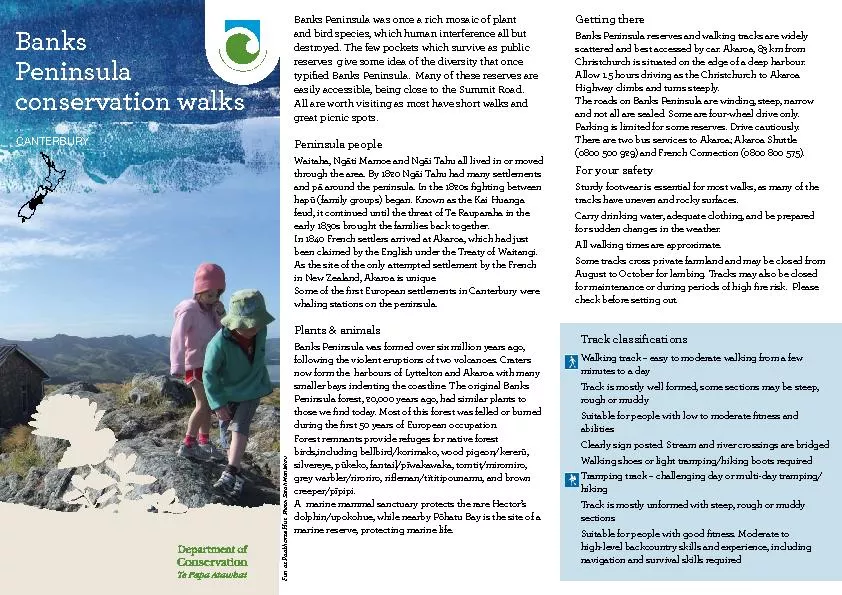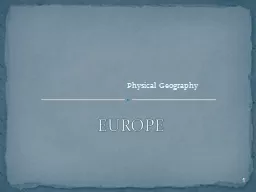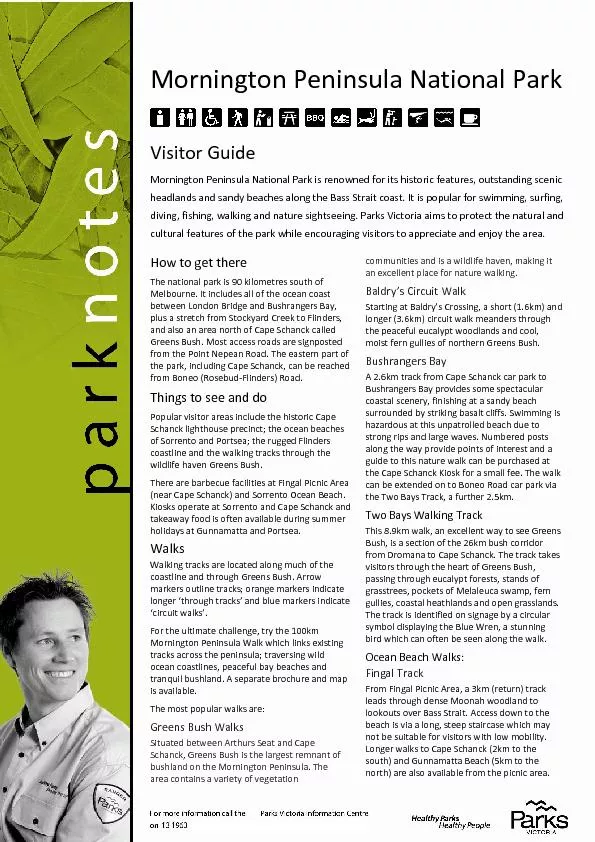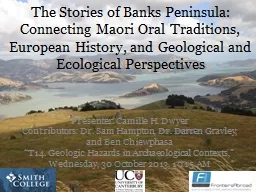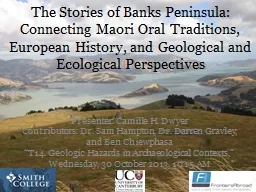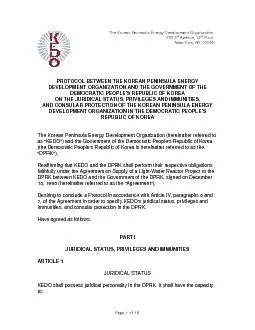PDF-Banks Peninsula conservation walksCANTERBURY
Author : kittie-lecroy | Published Date : 2016-07-07
Banks Peninsula was once a rich mosaic of plant and bird species which human interference all but destroyed The few pockets which survive as public reserves give
Presentation Embed Code
Download Presentation
Download Presentation The PPT/PDF document "Banks Peninsula conservation walksCANTER..." is the property of its rightful owner. Permission is granted to download and print the materials on this website for personal, non-commercial use only, and to display it on your personal computer provided you do not modify the materials and that you retain all copyright notices contained in the materials. By downloading content from our website, you accept the terms of this agreement.
Banks Peninsula conservation walksCANTERBURY: Transcript
Download Rules Of Document
"Banks Peninsula conservation walksCANTERBURY"The content belongs to its owner. You may download and print it for personal use, without modification, and keep all copyright notices. By downloading, you agree to these terms.
Related Documents

